AJANTA is world's greatest historical monument recognised by UNESCO located AT 105kms from Chh Sambhaji Nagar City of Maharashtra, India. There are 30 caves in Ajanta of which 9, 10, 19, 26 and 29 are chaitya-grihas and the rest are monasteries. These caves were discovered in AD 1819 and were built up in the earlier 2nd century BC-AD. Most of the paintings in Ajanta are right from 2nd century BC-AD and some of them about the fifth century AD and continued for the next two centuries. All paintings shows heavy religious influence and centre around Buddha, Bodhisattvas, incidents from the life of Buddha and the Jatakas. The paintings are executed on a ground of mud-plaster in the tempera technique.
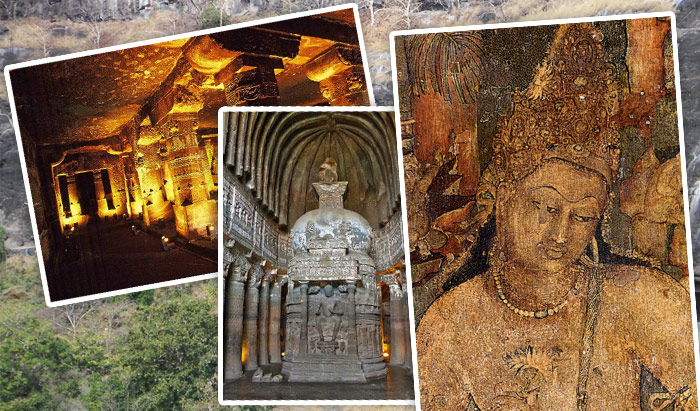

These 34 monasteries and temples, extending over more than 2 km, were dug side by side in the wall of a high basalt cliff, not far from Chh Sambhaji Nagar, in Maharashtra, ELLORA IS ABOUT 35 KM FROM Chh Sambhaji Nagar , with its uninterrupted sequence of monuments dating from A.D. 600 to 1000, brings the civilization of ancient India to life. Not only is the Ellora complex a unique artistic creation and a technological exploit but, with its sanctuaries devoted to Buddhism, Hinduism and Jainism, it illustrates the spirit of tolerance that was characteristic of ancient India.
Sai Baba of Shirdi (28 September 1835 – 15 October 1918; resided in Shirdi), also known as Shirdi Sai Baba, was an Indian spiritual master who was and is regarded by his devotees as a saint, fakir, and satguru, according to their individual proclivities and beliefs. He was revered by both his Hindu and Muslim devotees, and during, as well as after, his life it remained uncertain if he was a Hindu or a Muslim himself. This however was of no consequence to Sai Baba himself.[2] Sai Baba stressed the importance of surrender to the guidance of the true Satguru or Murshid, who, having gone the path to divine consciousness himself, will lead the disciple through the jungle of spiritual training.[3]
Sai Baba is worshiped by people around the world. He had no love for perishable things and his sole concern was self-realization. He taught a moral code of love, forgiveness, helping others, charity, contentment, inner peace, and devotion to God and guru. He gave no distinction based on religion or caste. Sai Baba's teaching combined elements ofHinduism and Islam: he gave the Hindu nameDwarakamayi to the mosque he lived in,[4]practised Muslim rituals, taught using words and figures that drew from both traditions, and was buried in Shirdi. One of his well known epigrams, "Sabka Malik Ek" ("One God governs all"), is associated with Hinduism,Islam and Sufism. He also said, "Trust in me and your prayer shall be answered". He always uttered "Allah Malik" ("God is King").[3]
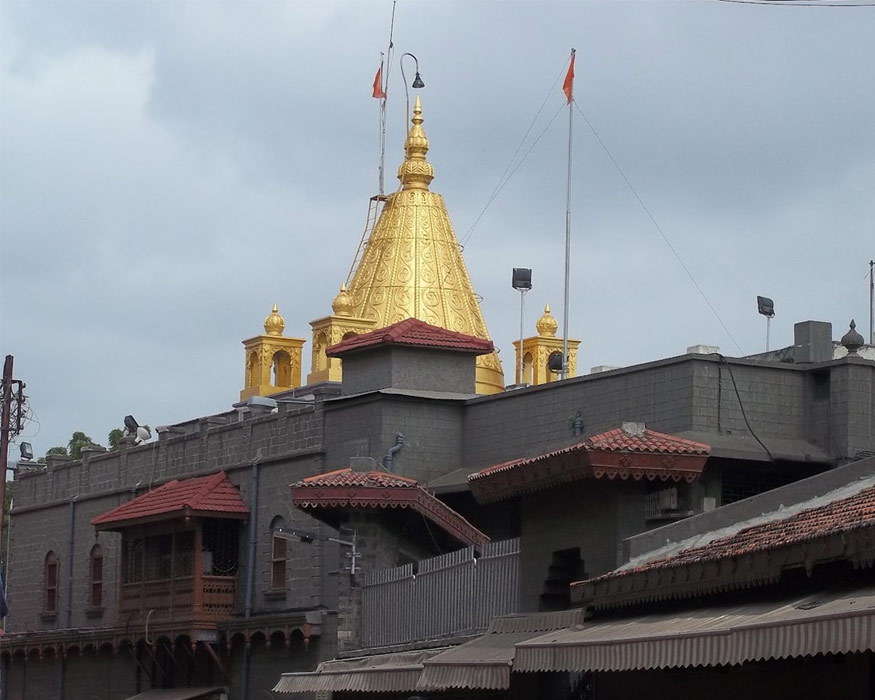
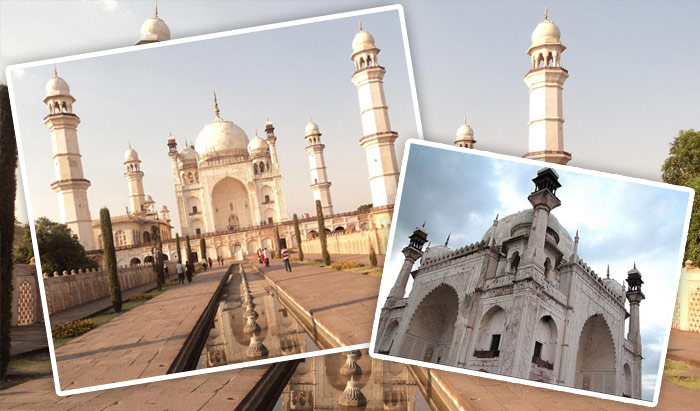
Bibi Ka Maqbara is situated about 5 kms from the Chh Sambhaji Nagar city, the burial place of Aurangzeb wife, Rabia-Durrani. Aurangzeb’s son built this monument in 1679 AD in memory of his mother Rabia-Durrani. It is an imitation of the Taj Mahal (among 7 new wonders of world) at Agra, it is also called as "poor man's Taj Mahal" owing to it being a poor replica of the Taj. Behind the tomb is located a small archeological museum.
The comparison with the Agra monument has unfortunately somewhat degraded the Chh Sambhaji Nagar tomb which in itself displays a worthwhile architectural design, with much distinguished surface ornamentation in the late Mughal style.
Daulatabad is located at a distance of 17 km from Chh Sambhaji Nagar. This fort, which was once known as Devagiri, is a magnificent 12th century fortress standing atop a hill. Daulatabad, which is constructed with excellent architecture, is one of the few invincible forts in Maharashtra.
Mohammed Bin Tughluq, the sultan of Delhi gave the name Daulatabad 'The city of fortune'. Series of trick defense and secret escapes routes are the famous features of this fort. Jami Masjid, Bharatmata Mandir, the Chand Minar, Elephant Tank and 'Chini Mahal' or Chinese Palace are the important monuments inside the fort. Daulatabad Fort, which initially had stronghold of Yadav, passed through the hands of several dynasties in Deccan.
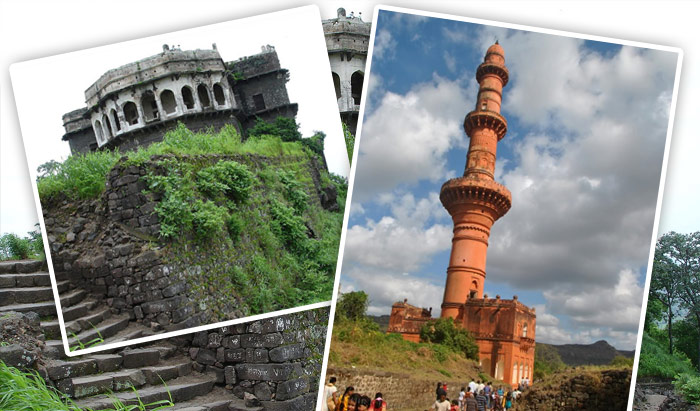
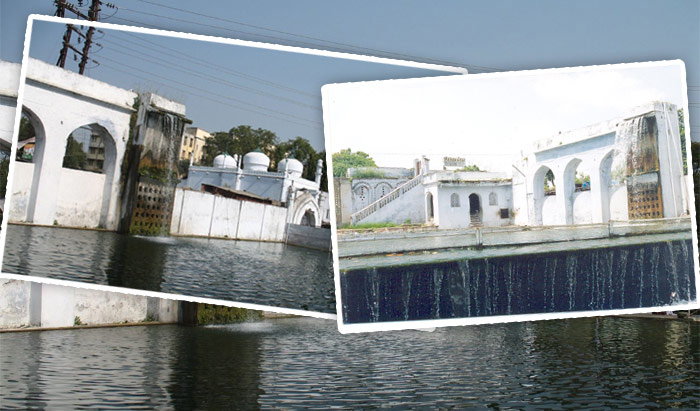
Panchakki,(Devanagari: पानचक्की) also known as the water mill, takes its name from the mill which used to grind grain for the pilgrims. This monument located inAurangabad, Maharastra, displays the scientific thought process put in medieval Indian architecture. It was designed to generate energy via water brought down from a spring on a mountain. The building, attached to the dargah of Baba Shah Musafir a Sufisaint is located in a garden near the Mahmud Darvaza and consist of a mosque, a madrissa, a kacheri, a minister's house, a sarai and houses for zananas.
Grishneshwar/ Grushneshwar Jyotirlinga is one of the 12 Jyotirlinga shrines mentioned in the Shiva Purana (kotirudra sahinta,Ch.32-33 referred as "Grishneshwar Jyotirlinga"). Grishneshwar is believed as the Last or 12th (twelfth) Jyotirlinga on the earth. This pilgrimage site is located at a village calledVerul which lies at a distance of 11 km from Daulatabad (Devagiri) and 33km fromAurangabad. It lies at a close proximity to theEllora caves.

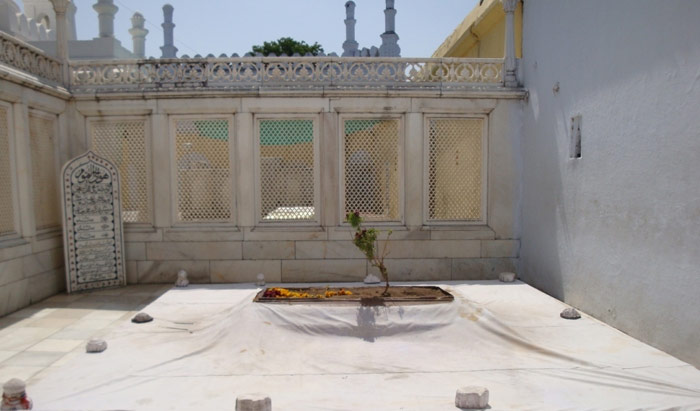
Aurangzeb (4 November 1618 – 3 March 1707) was the sixth emperor of the Mughal Empire. He ruled over most of the Indian subcontinent. His reign lasted for 49 years from 1658 until his death in 1707. During this time, Aurangzeb greatly expanded the territory of the Mughal Empire. He was constantly atwar. Victories in the south expanded the Empire to more than 3.2 million square kilometres. He was the last great ruler of theMughal dynasty. After his death, the power of the Mughal Empire declined quickly. Aurangzeb was well educated and ambitious. And after his death he was buried in khuldabad.









